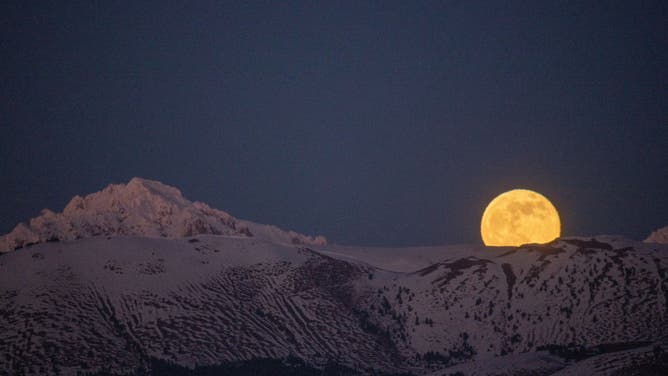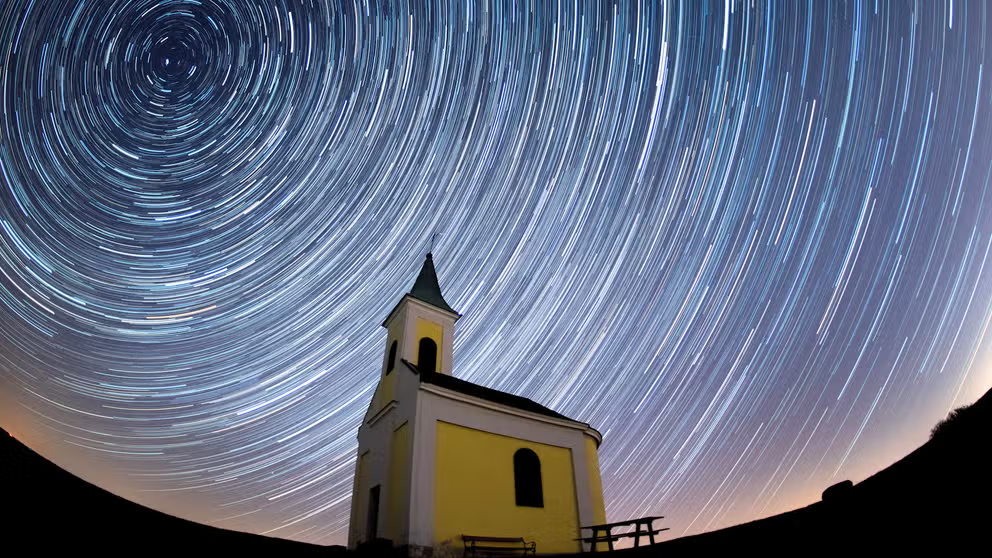December astronomy events: Best meteor shower of 2022, bright Mars and full cold moon
There are plenty of astronomy events in the final month of 2022. Here's a look at a few that might make you want to step outside and look up.
Meteor showers explained: what to know and how to watch
We call them shooting stars, but it's actually meteors that create dazzling streaks of light across our night sky.
It's hard to believe 2022 is coming to a close, yet here we are. December has a few astronomical treats, including one of the best meteor showers of the year, a chance to see Mars closer than in the last two years and the start of astronomical winter.
There are plenty of astronomy events in the final month of 2022. Here's a look at a few that might make you want to step outside and look up.
The full cold moon

The cold moon rises at sunset behind Monte Prena Mountain in Gran Sasso National Park in Italy, on December 19, 2021. The cold moon is the last full moon of the year. (Photo by Lorenzo Di Cola/NurPhoto via Getty Images)
(Getty Images)
December's full moon, known as the "cold moon," happens Dec. 7. With daylight saving time gone, you'll have a little bit more time to gaze at it. The moon will be at its fullest just after 11 p.m. EST.
7 TIPS ON HOW TO PHOTOGRAPH THE MOON
At the same time we have a full moon on Earth, NASA's Orion spacecraft will be returning from its test flight around the moon. The spacecraft, slated to return humans to the moon in 2025, has been sending back views of the lunar surface and of Earth throughout its nearly 26-day mission.
Mars at its biggest and brightest
In December, Mars makes a comeback of sorts when it will be at its closest point to Earth in 2 years.
On Dec. 8, Mars will be in opposition to Earth. During opposition, Mars and the sun are on opposite sides of Earth, putting the two planets the closest together in their orbits. However, close is all relative when talking about the vastness of space. Mars will still be 38.6 million miles away at its closest approach.
This will be the best view of the red planet in two years since Mars opposition last occurred in October 2020.
Winter solstice
What is a winter solstice?
FOX Weather meteorologist Katie Garner explains.
If your birthday falls on Dec. 21, the date of the winter solstice, you have a little less time to celebrate because it's the shortest amount of daylight of the year.
Ushering in the official start of astronomical winter, the sun will set at 4:48 p.m. EST, beginning the longest night of the year.
This astronomical event requires no action unless you want to enjoy an early sunset view or participate in some solstice celebrations.
The best time to see the Geminid meteor shower

A meteor streaks across the night sky in Bazhou, Xinjiang Province, China, in the early morning of December 14, 2021.
(Xue Bing / Costfoto/Future Publishing via Getty Images)
The Geminid meteor shower is underway until Dec. 24. According to NASA, the Geminids are considered one of the best and brightest meteor showers of the year.
The name of the meteor shower comes from the constellation Gemini, where the meteors radiate from, but the meteors are the remnants of asteroid 3200 Phaethon. As Earth passes through the debris trail every year, we get the Geminid Meteor Shower.
WATCH: NASA'S ORION SPACECRAFT VIEWS AN ECLIPSE OF THE MOON AND EARTH
Peak activity, when sky gazers can see between 100 and 150 meteors per hour, happens between Dec. 13 and 14. According to NASA, these meteors travel more than 40 times faster than a bullet and can best be spotted after 9 p.m. EST on Dec. 13.
The catch is that a cloudless view of the sky is best when trying to spot a shooting star. In December, with winter storms, a clear sky can be challenging to find.
A bright moon will also steal a bit of the show from the Geminids during peak activity this year.

